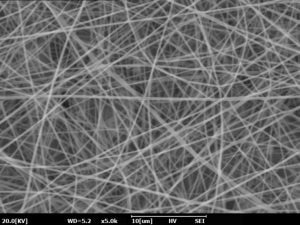Sponsored by InovensoReviewed by Louis CastelSep 21 2022
With the onset of the COVID-19 pandemic, the use of personal protective equipment (PPE) increased almost exponentially. PPE refers to the attire worn for protection against a number of different safety hazards.

Image Credit: Andriy Nekrasov / Shutterstock
For protection against COVID-19, PPE masks and gloves were used during the pandemic to shield end-users from the novel coronavirus.
As the rate of infection sky-rocketed, so did the frequency of mask usage. This also saw a rise in the accumulation of disposable masks as waste which adds to pollution. This increased to such an extent that masks are now found in the ocean, negatively impacting marine life. This article outlines some of the key points and ways to tackle the issue.
COVID-19 meant that it became essential to wear masks when out in public areas. This has brought about an increase in mask usage and, as a result, the amount of waste that accumulates in the environment, thereby escalating plastic pollution.
Nanofibers are practical materials that filter out viruses and other pathogens and can thus be used as a material in protective face masks. Nanofibers can be fabricated by electrospinning polymers, as the electrospinning of bio-degradable polymers facilitates the development of a filtering mask layer that can decompose over time. This could potentially help to solve the issue of polluting the environment without having to stop the use of face masks.
These nanofiber face masks can be produced with industrial-scale electrospinning units, such as the Inovenso Stream-Spinner, which is effective for the production of biodegradable nanofiber scaffolds at scale.
Nanofibers for Face Masks
The impact of coronavirus was felt in everyday life, with masks becoming something of a necessity in order to mitigate the spread. As the pandemic progresses, the next question becomes what takes priority: reducing mask usage to prevent a pollution problem or the continued wearing of masks to prevent the spread of COVID-19.
Fortunately, nanotechnology offers an answer that facilitates continued mask usage without the need to continue harming the environment.
Nanofibers can be used to manufacture N95 and N99 face masks that filter harmful pollutants. Made of polymeric materials, nanofibers act as a ‘sieve’ to stop pathogens and prevent them from entering the end-users respiratory tract. Electrospinning is a frequently used mechanism that synthesizes layers of nanofibers.
Furthermore, this process electro-statically charges polymeric solutions and converts them into solid nanofiber scaffolds. Nanofiber materials are exceptional air filters as a result of their nanoscale fiber diameters, porosity, and large surface-area-to-volume ratio.

Image Credit: Inovenso SEM Hoscop
A Solution to the Pollution: Bio-Degradability
With electrospinning, a large range of polymers can be used to produce nanofibers, including bio-degradable polymers. Biodegradable polymers are materials that can decompose in the environment over time, meaning the nanofiber forms of these bio-degradable polymers in masks can also effectively decompose.
Several companies have started developing bio-degradable nanofiber face masks. Masuku is a company that is already producing and selling electrospun biodegradable face masks.

Image Credit: 4Luck/ Shutterstock
Industrial-Scale Technology for Electrospun Masks
Combining electrospinning technology with eco-friendly media, Inovenso has the capacity to manufacture the nanofiber face mask media with its open-surface electrospinning technology. Inovenso’s aptly titled machines, Inovenso Stream-spinners, are able to electrospin significant volumes of bio-degradable polymers such as PCL, PVA, and Collagen.

Inovenso’s StreamSpinner 550 – Open surface electrospinning. Image Credit: Inovenso

This information has been sourced, reviewed and adapted from materials provided by Inovenso.
For more information on this source, please visit Inovenso.